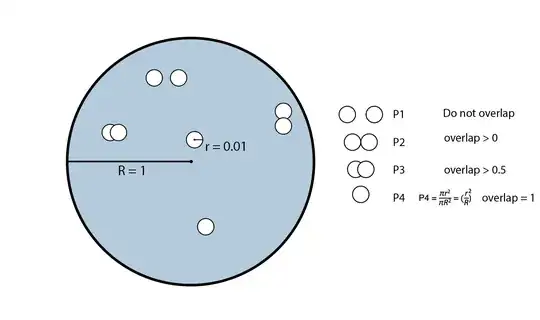Disclaimer: I am not a mathematician. But I am trying to understand this concept.
Having a blue circle of area πR2, and a smaller white circle of area πr2, what is the probability that a second, random, and independent, white circle of the same area, will:
1 ) P1 = Miss the first white circle entirely. 2 ) P2 = Intersect with the first white circle > 0 3 ) P3 = Intersect with the first white circle > 0.5 4 ) P4 = Intersect the first white circle entirely.
I calculated P4 simply by getting the fraction of the blue area that is taken by the first white circle. I suspect I would have to square this value since that would mean the chance of this area to be intersected?
Let me know your thoughts,
Thank you for the help =)
